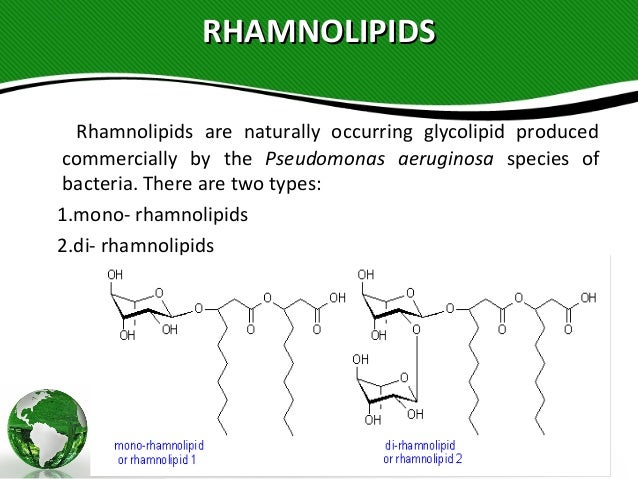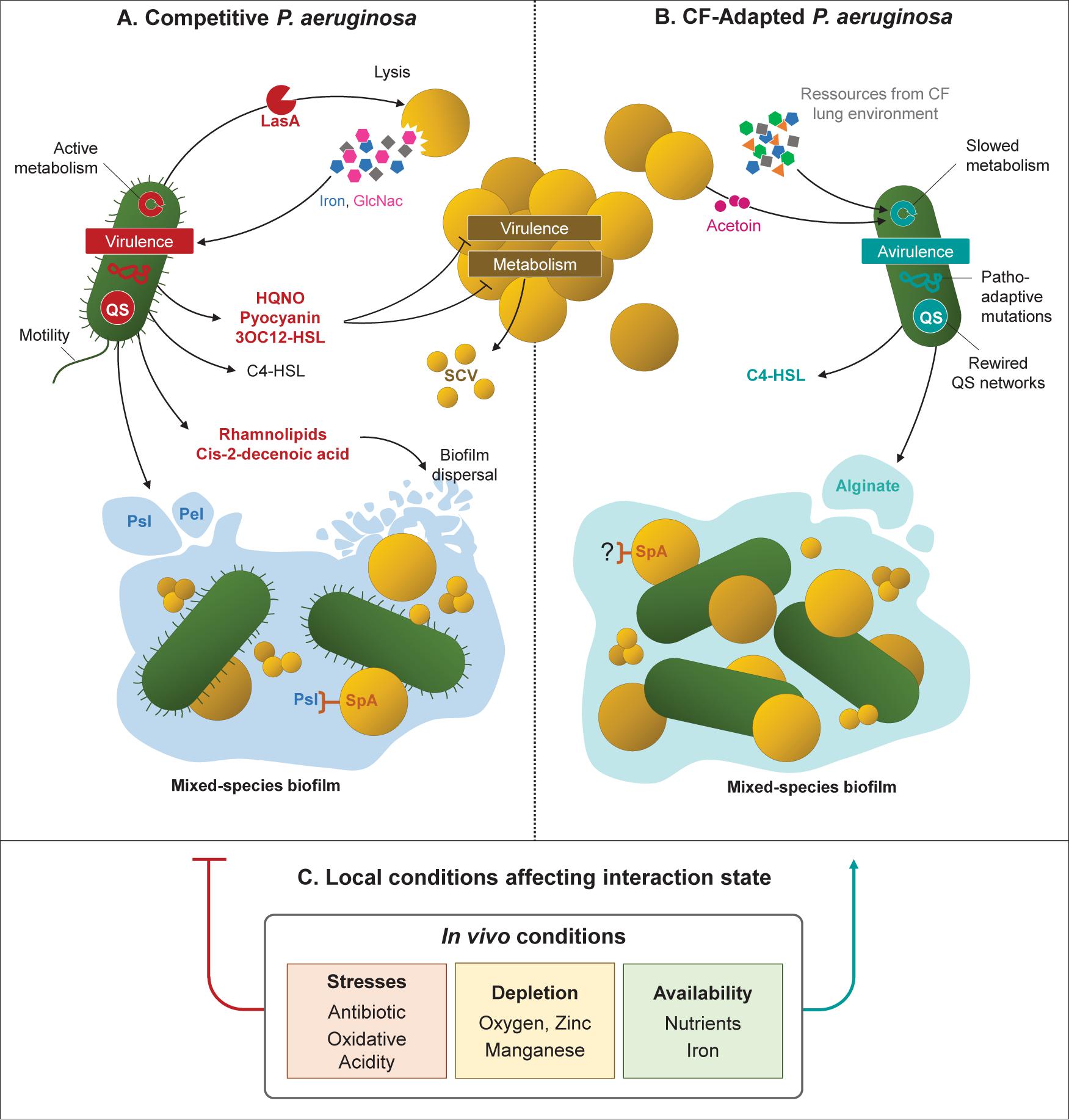CHARACTERISATION AND CYTOTOXICITY OF PSEUDOMONAS RHAMNOLIPIDS Presentation
| Introduction to Pseudomonas rhamnolipids | ||
|---|---|---|
| Pseudomonas rhamnolipids are biosurfactants produced by Pseudomonas species. They have gained significant attention due to their various applications in industries and bioremediation. This presentation aims to explore the characterization and cytotoxicity of Pseudomonas rhamnolipids. | ||
| 1 | ||
| Characterization of Pseudomonas rhamnolipids | ||
|---|---|---|
| Pseudomonas rhamnolipids are amphiphilic molecules composed of two rhamnose sugar molecules and one or two hydrophobic fatty acid chains. They exhibit a range of molecular weight and structural diversity based on the fatty acid chain length and the presence of mono- or di-rhamnose. Characterization techniques include mass spectrometry, nuclear magnetic resonance, and thin-layer chromatography. | ||
| 2 | ||
| Physicochemical Properties of Pseudomonas rhamnolipids | ||
|---|---|---|
| Pseudomonas rhamnolipids have excellent surface activity and lower critical micelle concentration (CMC). They possess emulsifying, foaming, and wetting properties, which make them suitable for various applications in industries like oil recovery, pharmaceuticals, and agriculture. The properties of rhamnolipids can be modified by altering the fatty acid chain length and the degree of rhamnose substitution. | ||
| 3 | ||
| Cytotoxicity of Pseudomonas rhamnolipids | ||
|---|---|---|
| Several studies have examined the cytotoxic effects of Pseudomonas rhamnolipids on different cell types. The cytotoxicity is dependent on the concentration and exposure time of rhamnolipids. Rhamnolipids have shown potential anticancer activity against various cancer cell lines. | ||
| 4 | ||
| Mechanisms of Cytotoxicity | ||
|---|---|---|
| Pseudomonas rhamnolipids induce cytotoxicity through various mechanisms, including membrane disruption, oxidative stress, and apoptosis. They can cause cell membrane destabilization and permeabilization, leading to cell death. Rhamnolipids also generate reactive oxygen species, which can cause damage to cellular components and trigger apoptotic pathways. | ||
| 5 | ||
| Cytotoxicity Assessment Methods | ||
|---|---|---|
| Cytotoxicity of Pseudomonas rhamnolipids can be assessed using various methods, such as MTT assay, lactate dehydrogenase release assay, and flow cytometry. These methods evaluate cell viability, membrane integrity, and apoptosis induction. Additionally, in vivo studies using animal models can provide insights into the systemic toxicity of rhamnolipids. | ||
| 6 | ||
| Factors Influencing Cytotoxicity | ||
|---|---|---|
| The cytotoxicity of Pseudomonas rhamnolipids can be influenced by factors like concentration, exposure time, cell type, and formulation. Higher concentrations and longer exposure times generally result in increased cytotoxic effects. Different cell types may exhibit varying sensitivities to rhamnolipids. | ||
| 7 | ||
| Biomedical Applications of Pseudomonas rhamnolipids | ||
|---|---|---|
| Despite their cytotoxicity, Pseudomonas rhamnolipids have shown potential applications in the biomedical field. They possess antimicrobial properties against various pathogens, making them useful as antimicrobial agents. Rhamnolipids have been explored as drug delivery systems, wound healing agents, and anti-inflammatory agents. | ||
| 8 | ||
| Environmental Applications of Pseudomonas rhamnolipids | ||
|---|---|---|
| Pseudomonas rhamnolipids have gained attention for their potential in bioremediation of hydrocarbon-contaminated environments. They enhance the solubility and bioavailability of hydrophobic pollutants, aiding in their degradation. Rhamnolipids also exhibit plant growth-promoting effects, making them useful in agricultural applications. | ||
| 9 | ||
| Conclusion | ||
|---|---|---|
| Pseudomonas rhamnolipids are versatile molecules with diverse physicochemical properties and potential applications. Understanding their characterization and cytotoxicity is crucial for their safe and effective utilization. Further research is needed to explore their full potential and optimize their applications in various industries and environmental remediation. | ||
| 10 | ||
| References (download PPTX file for details) | ||
|---|---|---|
| Abdel-Mawgoud AM, Lépine F, Déziel E. Rhamnol... Banat IM, Franzetti A, Gandolfi I, et al. Mic... Thavasi R, Jayalakshmi S, Balasubramanian T, ... |  | |
| 11 | ||







